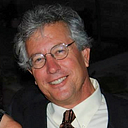SAQs for APUSH Topic 8.10 — The African American Civil Rights Movement
Fifteen questions designed to help students review for the annual exam and that relate to the post-World War II decades-long campaign by African Americans and their like-minded allies to end institutionalized racial discrimination, disenfranchisement, and racial segregation in the United States.”
- Name and briefly describe the US Supreme Court case that nearly a half-century before the start of the African American Civil Rights Movement marked the end of most of the political gains African Americans made during Reconstruction.
- During the African American Civil Rights Movement, civil rights activists and political leaders sought to get America to fulfill its Reconstruction-era promises. Name three Reconstruction-era promises that many civil rights activists and political leaders claimed had gone unfulfilled?
- During the African American Civil Rights Movement, some civil rights activists and leaders sought to get America to fulfill its Reconstruction-era promises utilizing a variety of nonviolent actions. Name and briefly describe the work of one civil rights activist and/or leader who sought to get America to fulfill its Reconstruction-era promises utilizing a variety of nonviolent actions.
- During the African American Civil Rights Movement, some civil rights activists and leaders combatted racial discrimination utilizing more militant forms of direct action. Name and briefly describe the work of one specific civil rights activist and/or leader who sought to get America to fulfill its Reconstruction-era promises utilizing more militant forms of direct action.
- During the African American Civil Rights Movement, the judicial branch of the Federal Government (aka the US. Supreme Court) sought to promote greater racial equality. The US Supreme Court case of Brown v. Board of Education is one piece of evidence in support of this claim. What did the court decide in Brown v. Board of Education? What was one outcome of this case?
- During the African American Civil Rights Movement, the legislative branch of the Federal Government (aka the Congress) sought to promote greater racial equality. The Civil Rights Act of 1964 is one piece of evidence in support of this claim. What did this law prohibit?
- During the African American Civil Rights Movement, the executive branch of the Federal Government (aka the President) sought to promote greater racial equality. President Eisenhower’s executive order to use federal troops during the integration of Central High School is one piece of evidence in support of this claim. What was one outcome of this order? President Truman’s Executive Order 9981 is one other piece of evidence in support of this claim. What was Executive Order 9981?
- Briefly describe one major similarity and one major difference between the US Supreme Court case of Brown v. Board of Education and the case of Plessy v. Ferguson.
- Briefly describe one major similarity and one major difference between the US Supreme Court case of Brown v. Board of Education and the Civil Rights Act of 1964.
- Briefly describe one major similarity and one major difference between the US Supreme Court case of Brown v. Board of Education and Executive Order 9981.
- Despite the court’s decision in Brown v. Board of Education, progress toward equality was slow. Name and briefly describe one reason for the slowing of progress toward equality after Brown v. Board of Education.
- An important term associated with the history of the African American Civil Rights Movement is the term “affirmative action.” What does the term “affirmative action” mean when used in reference to the African American Civil Rights Movement?
- The US Supreme Court decision in the case of Regents of the University of California v. Bakke relates to the term “affirmative action” and quotas. What did the court decide in this case?
- Name the first African American appointed to the United States Supreme Court. Also, the first African American elected Vice President of the United States and the first African American elected President.
- Name the event that many say marked the end of the African American Civil Rights Movement.
— — — — — — — -
For fifteen SAQs that relate to Reconstruction (the period in American history that lasted from 1865 to 1877 and marked a significant chapter in the history of African American civil rights) click here.
For five SAQs that relate to the Hippies (a number of whom were highly active in the African American Civil Rights Movement, especially in the first half of the 1960s when they traveled across the country to take part in sit-ins and marches against segregation in the South) click here.
APUSH Topic 8.12 is entitled The Expansion of the African American American Civil Rights Movement. Here students learn about:
- The Gay and Lesbian Movement: This late 1960s through the mid-1980s movement urged lesbians and gay men to “come out” to family, friends, and colleagues, live life as an openly lesbian or gay person, and counter societal shame with gay pride. An important historical event associated with the Gay and Lesbian Movement was something called the Stonewall Riots. For ten SAQs that relate to this series of 1969 spontaneous demonstrations by members of the then-called gay (and today called LGBT) community, click here.
- The Environmental Movement: For five SAQs that relate to this diverse philosophical, social, and political post-World War II movement for addressing environmental issues, click here.
- American Indian Movement:
- The Chicano Movement:
- The Asian American Movement:
- Second Wave Feminist Movement:
